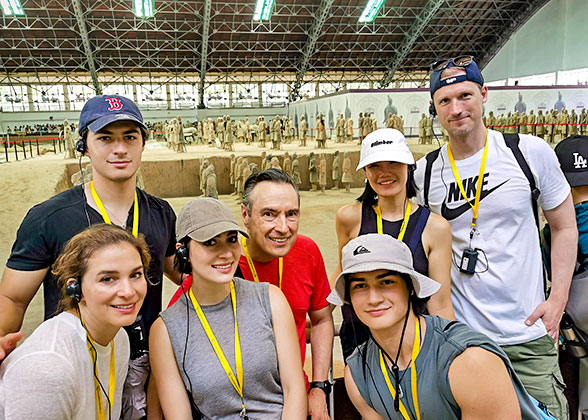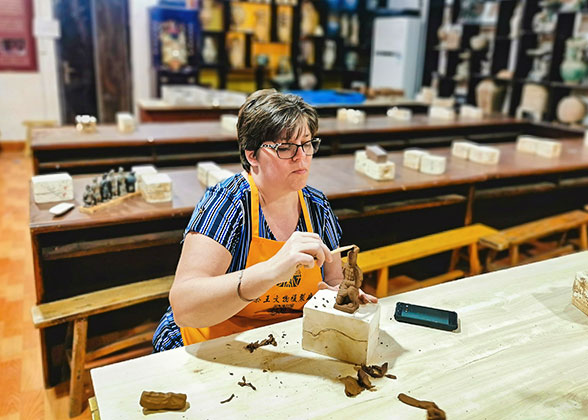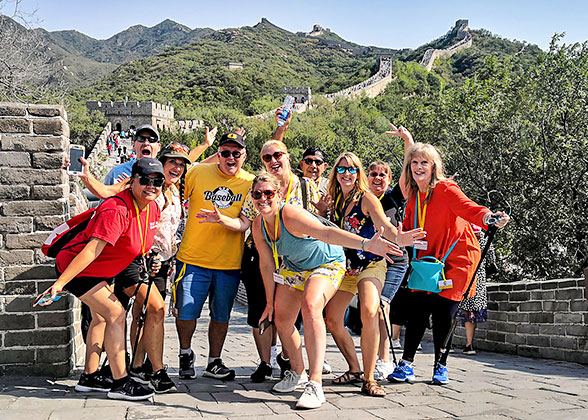In August 2000, the mysterious pit numbered K0007 was first found by the farmers in a nearby village. Located in the northeast of the Qin Shi Huang Mausoleum, this pit is about 900 meters (980 yards) from the outer city and approximately 1.5 kilometers (0.9 miles) from the center of the mausoleum, making it the farthest accessory pit found to date.
The pit, covering a total area of about 978 square meters (1,170 square yards) and shaped like the letter "F," is divided into three sections. Later excavations mainly unearthed some bronze aquatic birds, earning it the name "Bronze Aquatic Birds Pit." Archaeologists speculate it symbolizes a royal garden from the Qin Dynasty (221 BC - 207 BC), built for the emperor’s afterlife. Currently closed to the public, unearthed relics from this pit are displayed at the Exhibition Hall of Historical Relics in the
Terracotta Warriors and Horses Museum. Cultural Relics Unearthed from Pit K0007
In section I of Pit K0007, archaeologists unearthed and cleaned 46 pieces of bronze birds, including 6 cranes, 20 swans, and 20 lifelike wild geese. Additionally, 15 terracotta figures for domesticating the bronze birds were also excavated from section II, 7 of these are kneeling terracotta figures, and the remaining 8 are sitting figures with stretched legs. Some other smaller bronze wares were also found in section II and III of this pit.
Twenty bronze swans, including three standing and seventeen reclining, were unearthed from this pit. Specifically, one standing swan has a plump body, short and thick legs, large claws, and a long neck stretched downward into the water; its weight shifts forward, capturing a dynamic foraging motion. Another reclining swan has a plump body and presents an S-shaped posture, with its neck raised and head extended, portraying a peaceful resting pose.
 |
| Various Bronze Swans |
Six bronze cranes were unearthed here, all standing. Among these, one stands on a rectangular base and bends its long neck downward as if foraging, with a bronze insect clutched in its beak. The crane is tall and lifelike, depicting the moment it catches its prey and lifts it from the water.
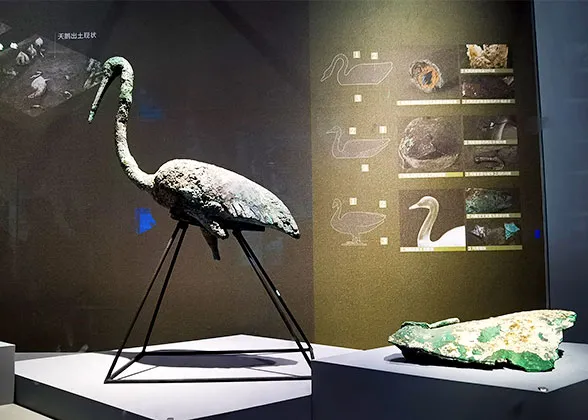 | | Tall Bronze Crane | |  | | A Bronze Crane Bending Its Neck | |
 |
| Bronze Goose |
In this pit, archaeologists also discovered twenty bronze geese, with four standing and sixteen crouching. Standing on a rectangular base, one goose's curved neck arches upward, its head tilts slightly left, and its beak is slightly open as if chirping. Its stout legs support a plump body, with two wings tucked behind its tail.
4. Kneeling Terracotta Figures
Seven kneeling terracotta figures were excavated from this pit. Dressed in long robes with soft caps and waist belts, they kneel on both knees with their toes touching the ground. Their left arms hang naturally, while right arms are raised with elbows slightly bent, thumbs upturned, and other fingers partially curled, likely once holding some objects in hands.
5. Sitting Terracotta Figures
Eight sitting terracotta figures found in this pit sit on the ground with their legs stretched forward. They lean forward slightly with their backs naturally bending. With arms stretching out and resting on knees, their left hands loosely clasp, and right palms face downwards. These figures also feature naturally drooping mustaches below noses, and small tufts of beard below mouths, as well as calm expressions.
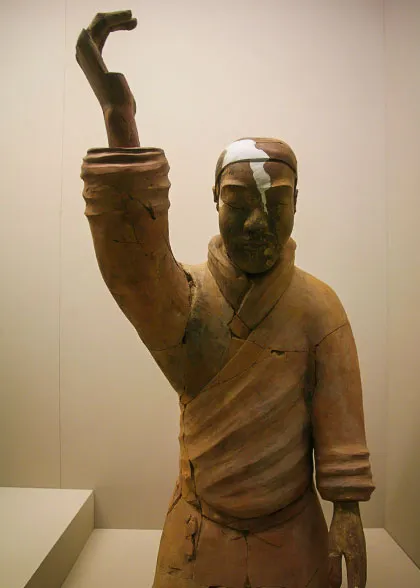 | | Kneel-sitting Terracotta Figures | | 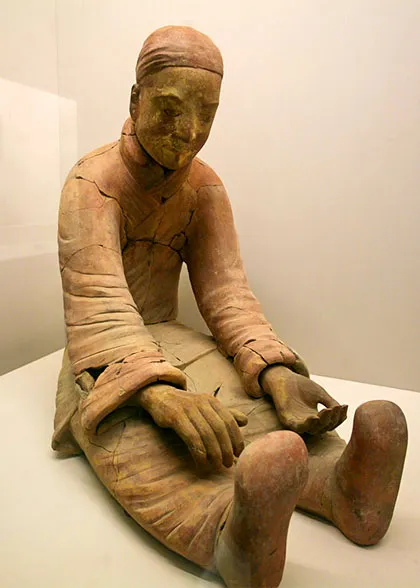 | | Sitting Figures with Stretching Legs | |
Around the terracotta figures in section II’s corridor, over 260 small silver, bronze, and bone wares were discovered, including silver fingernail covers, bronze subuliform tools, trumpet-shaped and cylindrical bone tools, and triangular-shaped bone pieces. These items were likely decorative accessories or props held by these figures, suggesting they may have played instruments through these tools to domesticate the birds. In addition, only a single leg of a bronze crane and scattered animal bones were found in section III.
 Pit K0006 - Civil Official Figures
Pit K0006 - Civil Official Figures Pit K9801 - Stone Armor and Helmets
Pit K9801 - Stone Armor and Helmets Pit K9901 - Acrobatics Figures
Pit K9901 - Acrobatics Figures
Further Reading:
 Exhibition of Archaeological Discoveries
Exhibition of Archaeological Discoveries Emperor Qinshihuang's Mausoleum Site Museum
Emperor Qinshihuang's Mausoleum Site Museum Why are there partition walls in the pit of Terracotta Army?
Why are there partition walls in the pit of Terracotta Army?
- Last updated on Aug. 22, 2025 by Sherry Xia -






